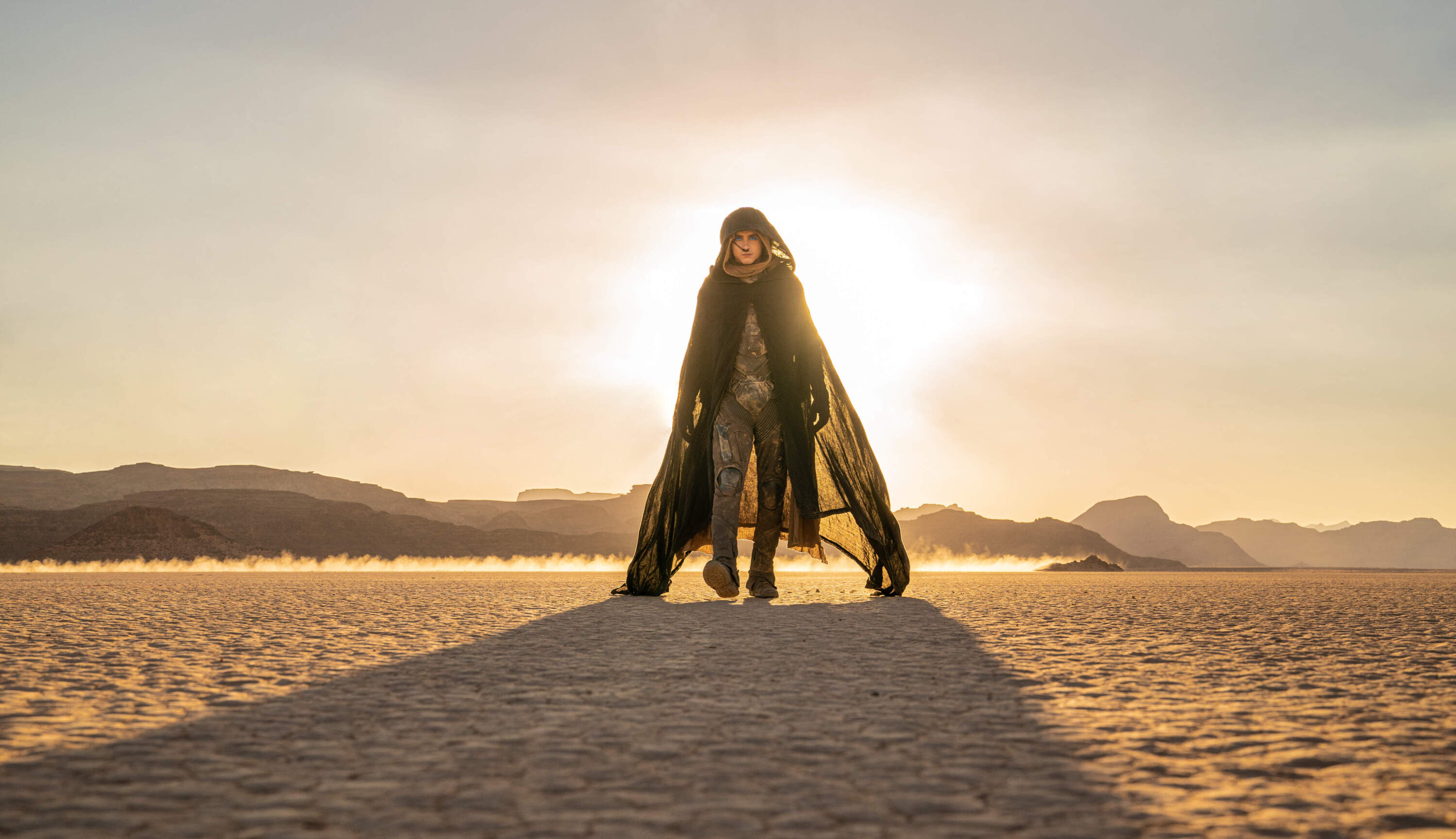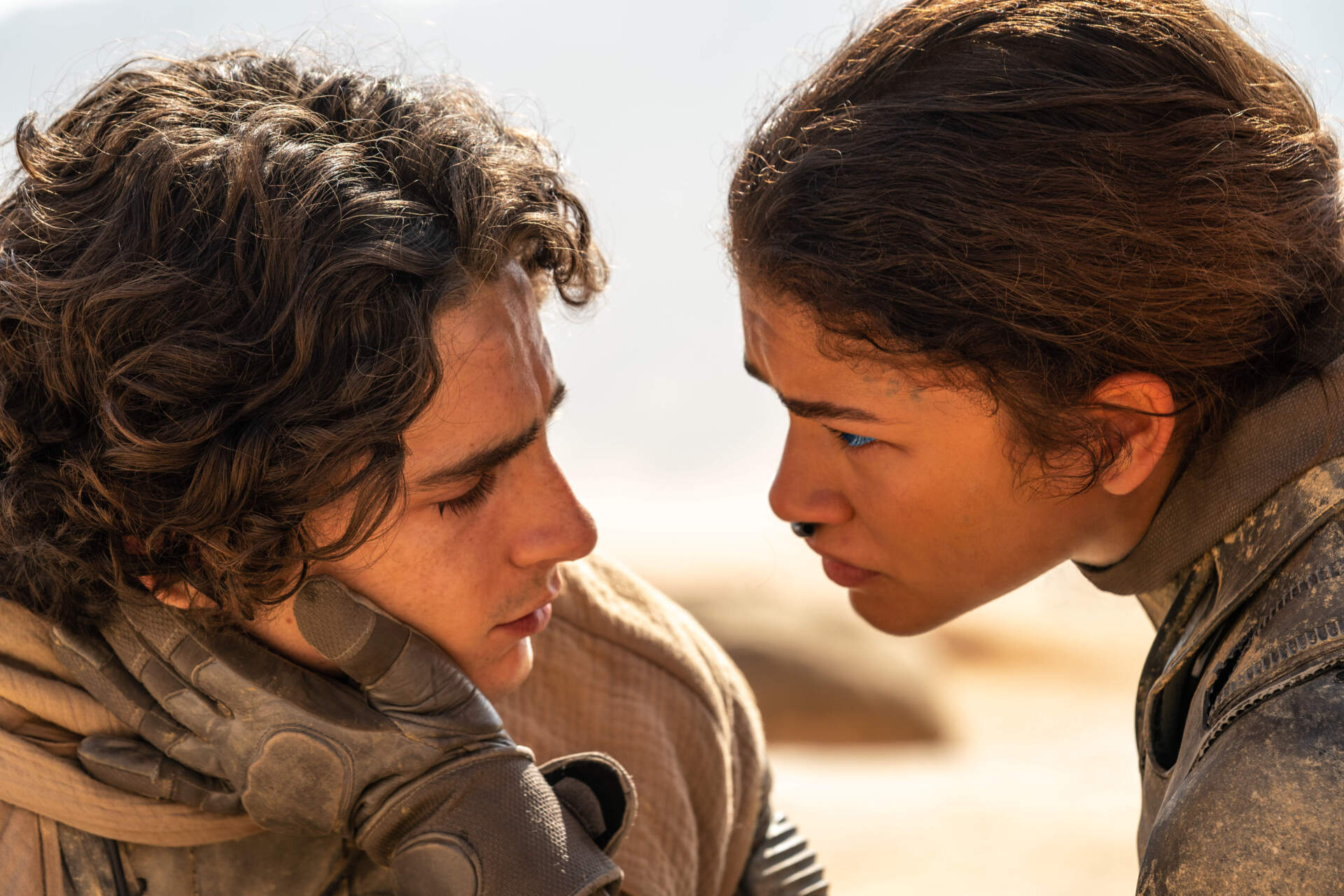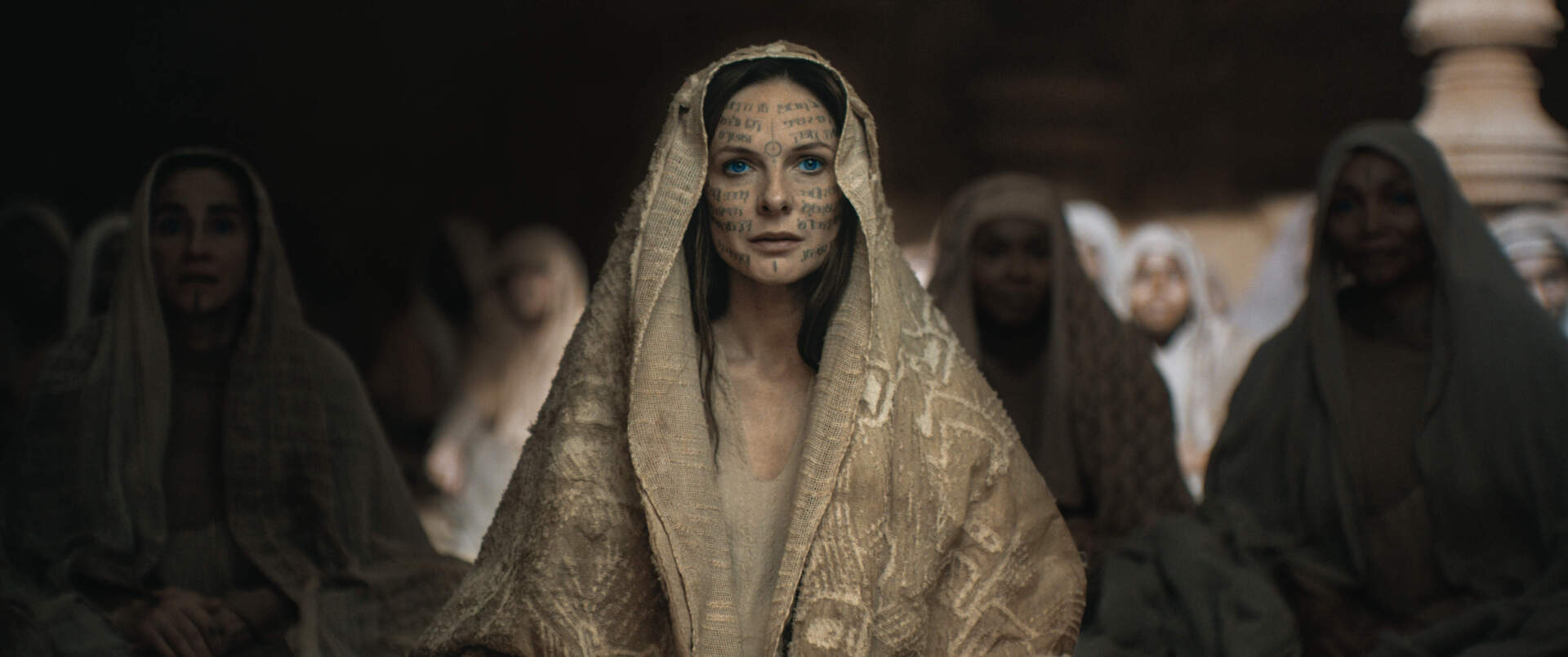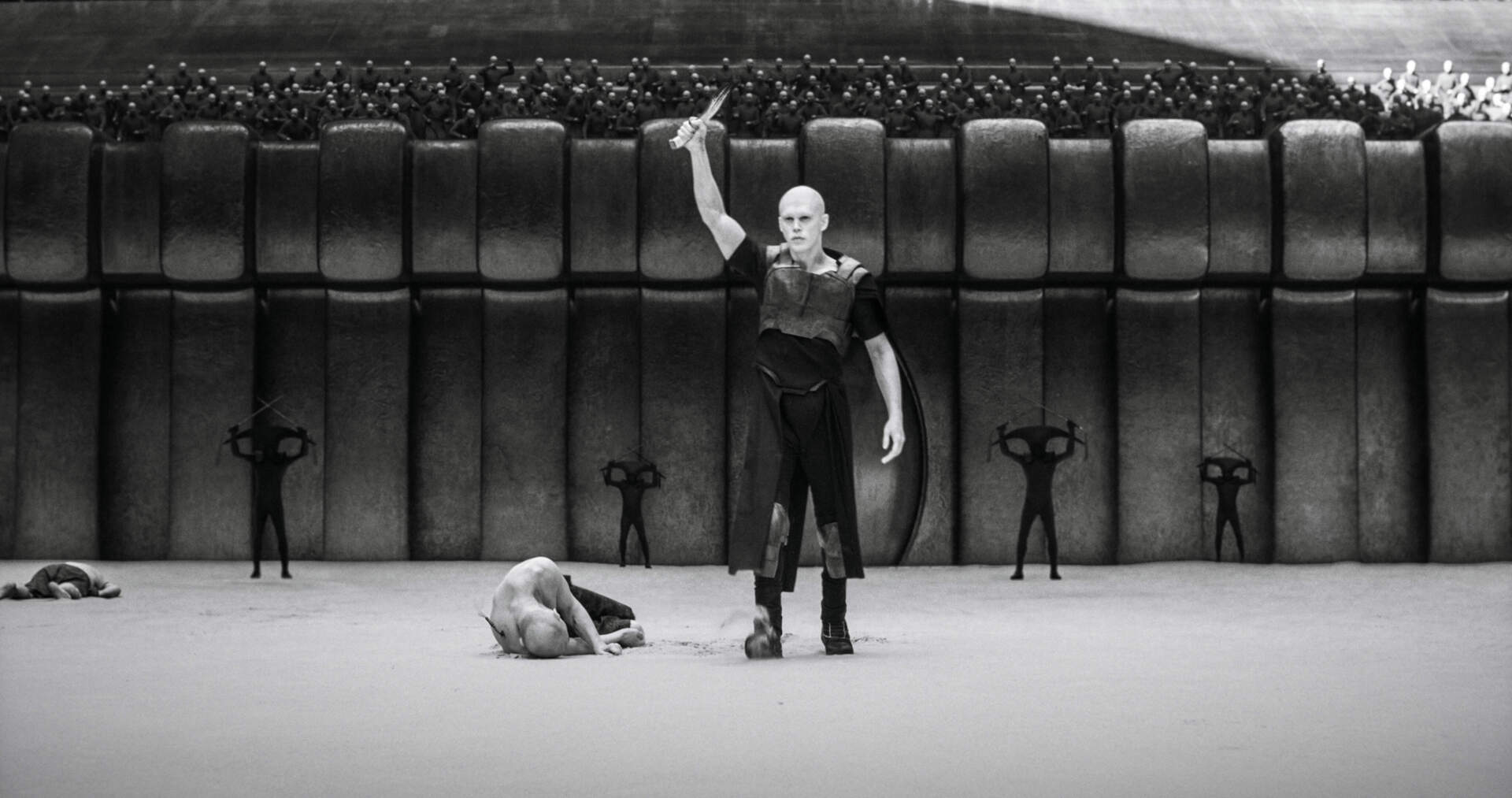Advertisement
Review
Denis Villeneuve's 'Dune: Part Two' is bigger and louder

When we last saw Timothée Chalamet’s Paul Atreides, his father’s empire was in ashes. The boy and his mother Jessica (Rebecca Ferguson) had been left for dead on the desert planet of Arrakis following a bloody, intergalactic coup by the grotesque Baron Harkonnen (Stellan Skarsgård, issuing edicts from a bathtub full of black slime) at the behest of a shadowy, unseen emperor. But, as was foreseen by the psychically gifted Paul and his witchy space nun mom, the last survivors of House Atreides were rescued by the Fremen, an oppressed tribe indigenous to Arrakis whose elders have prophesized a messiah that sure looks and sounds a lot like our protagonist. Paul has been seeing visions of the young warrior woman Chani (Zendaya) in his dreams since he was a child. She’s the love of his life but also the key to a terrible destiny, one he’ll spend the rest of the movie trying desperately to avoid.

Director Denis Villeneuve’s 2021 “Dune” was a grandly pulverizing spectacle picture, adapting the first half of author Frank Herbert’s 1965 eco-fable with bombastic brio. The sequel is even bigger and louder, answering a first film full of table-setting with one gargantuan set piece after another. “Dune: Part Two” is a massive movie, made to be seen on an enormous screen with the most immersive sound system you can find. I must admit that in the past, I’ve found Villeneuve films ponderous and over-inflated, so dour that they teeter on self-parody. (He’s the humorless technician Christopher Nolan is often wrongly accused of being.) But the Quebecois auteur’s stentorian sensibility is perfectly suited to the stakes of this particular space opera, and he’s one of the few Hollywood directors today who can conjure a truly awe-inspiring sense of scale. With rare exceptions, franchise filmmaking has become a drearily televisual affair; lots of medium shots of actors standing in front of greenscreens in Georgia warehouses. Filmed on gigantic sets built in locations around the world, these ”Dune” pictures look and feel like gosh darn *movies,* referencing famous shots from “Lawrence of Arabia” and “Apocalypse Now” not just as homages, but as aspirational markers. To Villeneuve, size does matter.
Arrakis has been plundered for centuries by warring clans from other worlds fighting over a precious, psychotropic mineral called “spice” that facilitates space travel. The fantastic first hour of “Dune: Part Two” finds young Paul learning the ways of the Fremen, sabotaging Harkonnen’s spice mining efforts with heroic guerilla raids, explicitly coded as terrorist attacks, complete with Islamic singers wailing over Hans Zimmer’s Middle Eastern-tinged score. (The Fremen have been cast with actors of color, as opposed to the white European space colonists and the explicitly Aryan Harkonnen. The political discourse around this movie is going to be a mess.) Javier Bardem’s Stilgar serves as a hearty mentor to the boy and becomes a staunch believer that this kid is the Chosen One. Lumbering across the desert resembling the second coming of Anthony Quinn, Bardem gives a droll performance in a movie that could use a few more like it, his blind faith teased in scenes that sometimes feel as if “Monty Python’s Life of Brian” took place in another galaxy.

Paul’s willing to play along with all this divine prophecy business for as long as the Fremen are willing to help him avenge his father’s assassination. The trouble arises when it starts looking more and more like what was foretold is turning out to be true. Even scarier than the giant sandworms in “Dune: Part Two” is the world-destroying power of religious fundamentalism. In the south of Arrakis, there are thousands of Fremen who’ve been wasting their summers praying in vain for a (white) savior to rise from these streets. It doesn’t help that Jessica and her cult of witchy space nuns have been down there spreading the gospel of Paul’s exploits. (Though to be fair, what mother doesn’t think her son is God’s gift to the universe?) What follows is something like “The Last Temptation of Timée,” with our young messiah glimpsing the horrific consequences of his destiny and learning to accept it anyway.
Villeneuve and co-writer Jon Spaihts have largely discarded the psychedelic aspects of the source material that previously attracted more abstract filmmakers like David Lynch and Alejandro Jodorowsky. These new “Dunes” are extremely literal, explain-y movies, which is a valid enough approach, even if the solemn uniformity of tone started to wear on me a bit during the movie’s middle hour. It may sound like a strange thing to say about a picture in which the principal cast contains seven Oscar nominees, but I missed Jason Momoa. He brought a swashbuckling flair to the first film that’s lacking in this all-business sequel. The wispy Chalamet acquits himself better than expected with the heavier stuff — after suffering through “Wonka,” I’d given up on the actor entirely — though I noticed Villeneuve very cleverly has Paul speaking in the movie’s made-up Fremen language every time he needs to sound like a hardass.

There’s some ghoulish comic relief in the form of Austin Butler’s Feyd-Rautha, an animalistic Harkonnen adversary for Paul. He’s introduced in a stunning black-and-white sequence modeled after Leni Riefenstahl’s “Olympia,” the implications of such a reference being entirely intentional. (There’s also something funny about seeing Elvis in a role played 40 years ago in Lynch’s adaptation by Sting.) Butler goes full ham with the monstrous physicality, replicating Skarsgård’s slurry Swedish accent with the same studied fidelity he brought to the king of rock ‘n’ roll’s drawl. He’s a hoot. The aforementioned emperor of the universe finally shows his face in the form of Christopher Walken. And while their ages don’t quite match up, there’s still something sublime about the casting of Florence Pugh as Walken’s daughter — they both carry themselves with a slightly alien, aristocratic disdain.
Alas, Pugh doesn’t get much to do in this picture. Neither does Léa Seydoux, who disappears after a killer cameo as a witchy space nun seductress. The marketing campaign for the 2021 “Dune” was justly criticized for hiding the “Part One” of it all in an opening credit crawl, and while “Dune: Part Two” has what feels like a more conclusive finale, the film still leaves a lot of doors open for a third installment. I’m assuming that’s how Villeneuve got away with such a grimly foreboding, downbeat final scene. Given the circumstances and the state of the world right now, it’s probably the only responsible way to finish the film. After all, holy wars are like Hollywood franchises. They never really end.
“Dune: Part Two” is now playing in theaters and is screening on 70mm film at the Somerville Theatre and the Coolidge Corner Theatre.
